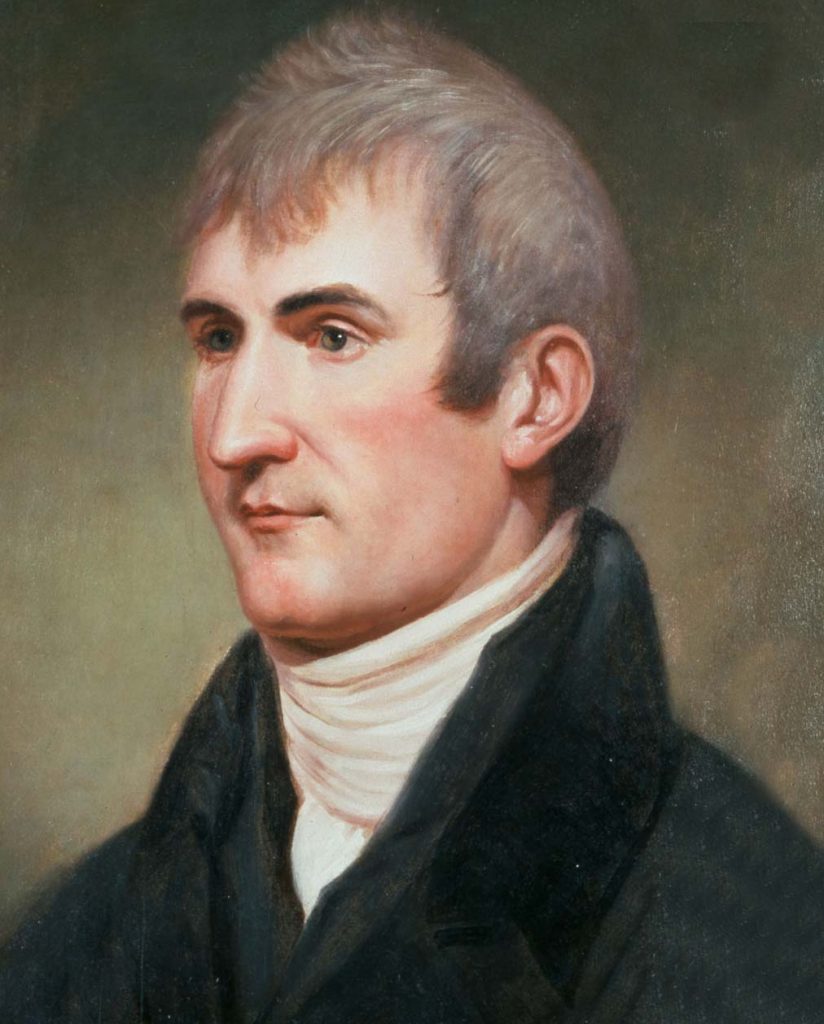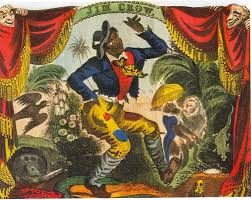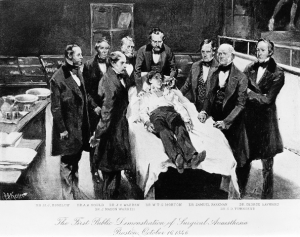It is the year 1804, and your leader is Captain Meriwether Lewis, front runner of the Corps of Discovery appointed by President Thomas Jefferson himself. Fueled by his hatred for the British and enamored by glory and adventure, Lewis joined the militia in 1794 to suppress the Whiskey Rebellion, and then “served in the Army under General ‘Mad Anthony’ Wayne, where he notably witnessed several Indian nations sign the Treaty of Greenville on 3 August 1795.”1

Unfortunately, his reputation in the Army was tarnished when he was “court-martialed for conduct unbecoming of an officer,” and although he was acquitted with honor, the consequences of his unruly behavior reshaped his military career, ending his dreams of glory on the battlefield.2 He was reassigned to another unit, and from then on filled mundane administrative positions. Despite the deviation in his career path, he continued to excel, reaching the pinnacle of his administrative career when he became the secretary to President Thomas Jefferson. The President had known Lewis since he was a boy, and believed that he possessed the knowledge and skills necessary to lead a successful expedition from the trans-Mississippi region to the Pacific Ocean.3
These were the instructions received by Meriwether Lewis from Thomas Jefferson: “The object of your mission is to explore the Missouri river, & such principal streams of it, as, by its course & communication with the water of the Pacific Ocean may offer the most direct & practicable water communication across this continent, for the purposes of commerce.”4 Captain Lewis’s mission was to search for a new route to the Pacific; and in addition to mapping waterways such as the Missouri river, he and his team were to traverse swaths of uncharted territory. This was dangerous and unfamiliar terrain, home to many Native American tribes, some of whom they would rely on to guide them, and others who were hostile and unsympathetic to their cause. Captain Lewis would attempt to promote diplomatic relationships with these tribes, while annotating all aspects of topography and demography to send back to the President. This was his dream come true, another adventure, a chance to relish in the glory of new discoveries and an opportunity to impress the President. Captain Meriwether Lewis and his members of the Corps of Discovery would become one of the first civilized men to explore and endure the perils of the western frontier.
The expedition party “consisted of about 45 soldiers, boatmen, and woodsmen, not to mention Lewis’s dog Seaman, and a slave named York… who was considered an equal member of the troop.”5 The expeditioners endured strenuous traveling conditions, particularly dealing with mosquitoes in the summer: “their bites make the horses nearly frantic and leaves Lewis’s dog howling in pain. To escape their attacks, they tried greasing themselves by day, standing in the smoke of campfires in the evening and retreating under netting at night.”6 Investigating new landmarks was exciting, but even the slightest misstep could send them hurdling to their deaths. In fact, Lewis nearly died when “he climbed on to a jagged outcropping of rock at the top of some bluffs, when he lost his footing three hundred feet above the swift current of the Missouri River, which, in 1804, flowed directly below.”7

Captain Meriwether Lewis’s journey was filled with invisible threats, but the most unpredictable dangers came while exploring the Missouri River. Its waters were deceptive, leading travelers to believe that it was easily maneuverable. Its calm surface and murky waters masked the fast currents and debris that could send uprooted trees catapulting into a boat, leaving only seconds for the crew to avoid a major catastrophe. The sandbars were constantly shifting, which created a hazard for boats that were thought to be docked safely: “One night the guard awakened them all with the news that the sandbar on which they had camped was sinking. The river was carving it away, and the company barely loaded their gear into the boats and pulled away before the bank under which they had kept the boats collapsed. By the time they reached shore the sandbar was completely gone.”8 The possibility of death lurked around every corner, and soon another formidable threat was discovered while they traveled by foot, namely a vicious new species of bear, which they called the white bear, or grizzly bear. These bears were aggressive and likely to attack humans: “One bear took ten bullets, five of these through the lungs, yet swam to a sandbar more than halfway across the Missouri and survived twenty minutes before dropping. It weighed between five hundred and six hundred pounds, was eight feet seven inches long, five feet ten inches around its breast, and had claws, or ‘talons,’ four and three-eighths inches long.”9 Captain Lewis decided it was in everyone’s best interest to avoid any unnecessary confrontations with the bears. It was not worth the risk of life and limb to hunt these beasts for game. Despite the frequent mishaps caused by mother nature amidst the dangers of the wild, Captain Lewis and his troupe successfully made it to the Pacific Ocean.
The final leg of their journey was just as grueling. They traveled back to St Louis through the winter, and with food and supplies stretched thin, they resorted to a diet of dog meat. On their way back to St Louis, Captain Lewis sent his best hunter, George Drouillard, to scout the Maria River valley, when he suddenly spotted a group of Indians spying on his comrade in the distance. The fear of being robbed and the thought of losing all his important documents turned into courageous action that drove him to intervene with these suspicious onlookers before they had the opportunity to take Drouillard hostage. Captain Lewis was able to negotiate his peaceful intentions by giving them gifts, but remained uneasy when they decided to set up camp with these surprise visitors. His instincts were right. They had turned in for the night with the Blackfeet Indians, an aggressive band of Native Americans known in those parts for stealing, and even killing. “Lewis was awakened by the noise and, seeing his rifle missing, followed the Indian and ordered him to lay it down. He complied, and Lewis ordered his men to refrain from killing him, but when he and some of the other Blackfeet began to drive off the explorers’ horses, Lewis took off in pursuit, without his shot pouch, and threatened to shoot if they did not halt. When they turned, Lewis shot one in the belly, but the Blackfeet returned fire before crawling behind a rock. In the end, the Blackfeet left behind four of their own horses and got away with only one from the explorers.”10 Lewis and his team have had many close calls, but this was the first serious altercation that resulted in a firefight. Luckily, all members of the Corps of Discovery escaped death, unscathed.

Captain Meriwether Lewis and the Corps of Discovery were the “first to have traversed the American West and returned with voluminous reports.”11 They survived over eight thousand miles and were able to “describe about 180 plants and 125 animals that had not been reported to scientists.”12 They fought for their lives as they hiked through harsh terrain, navigated unpredictable waterways, fended off vicious animals, and narrowly escaped death from the hostile Blackfeet Indians. When Captain Lewis lost touch with civilization, many people thought that he and the rest of his crew had perished. On 23 September 1806 everyone was amazed when they arrived in St. Louis after two years and four months with only one casualty.13 Captain Lewis successfully completed Thomas Jefferson’s requests to explore the Missouri river and map out its waterways, found the Pacific Ocean, provided documentation of the lands they crossed and the Native American tribes they interacted with along the way to establish peace on behalf of the United States government. 14 His courage, curiosity, and determination to accomplish the task set forth by President Thomas Jefferson enabled him to push the boundaries of exploration. He defied all limitations of the civilized world, making him one of the most ground-breaking explorers in the United States of America.
- Dictionary of Literary Biography vol. 183: American Travel Writers 1776-1864, January 1997, s.v. “Meriwether Lewis,” by Rob J. Brault. ↵
- Cyclopedia of World Authors, January 2003 s.v. “Meriwether Lewis,” by Joseph Byrne. ↵
- Cyclopedia of World Authors, January 2003 s.v. “Meriwether Lewis,” by Joseph Byrne. ↵
- Thomas Jefferson, “Instructions to Meriwether Lewis,” Instructions to Meriwether Lewis (August 2017), 422. ↵
- Keira Stevenson, “The Expedition of Lewis & Clark,” Expedition of Lewis & Clark (August 2017): 1. ↵
- Ann Rogers, Lewis and Clark in Missouri (Colombia: University of Missouri Press, 2002), 49. ↵
- Ann Rogers, Lewis and Clark in Missouri (Colombia: University of Missouri Press, 2002), 34. ↵
- Dictionary of Literary Biography vol. 183: American Travel Writers 1776-1864, January 1997, s.v. “Meriwether Lewis,” by Rob J. Brault. ↵
- Dictionary of Literary Biography vol. 183: American Travel Writers 1776-1864, January 1997, s.v. “Meriwether Lewis,” by Rob J. Brault. ↵
- Dictionary of Literary Biography vol. 183: American Travel Writers 1776-1864, January 1997, s.v. “Meriwether Lewis,” by Rob J. Brault. ↵
- Encyclopedia of Geography, 2010, s.v “Lewis and Clark Expedition,” by John Allen. ↵
- Funk & Wagnalls New World Encyclopedia, 2017, s.v “Lewis and Clark Expedition.” ↵
- Ann Rogers, Lewis and Clark in Missouri (Colombia: University of Missouri Press, 2002), 88, 90. ↵
- Ann Rogers, Lewis and Clark in Missouri (Colombia: University of Missouri Press, 2002), 89-90. ↵



51 comments
Madison Guerra
I thought it was a very well developed and detailed article. It had a lot of information and it kept the reader hooked throughout the entire read. I liked learning about the different struggles these men faced along their long journey. It is very crazy to think that there was only one casualty among all of the members.
Jocelyn Moreno
This article was very interesting, I always just thought of him in relation with sacagawea. For some odd reason I’ve always thought his journeys were a breeze coming with no conflicts what so ever. It’s nice that you showed me that his whole journey was a possibility of deaths. To come back after two years with only one causality is very impressive. It’s nice to have a new insight on someone I knew about since first learning about history.
Sarah Nguyen
Awesome background information. Based off the title, I didn’t know this was about Lewis and Clark’s expeditions because it didn’t click until the author stated he was to explore and map out the trans-Mississippi river, so it was cool getting to know the background to Lewis and how his “unruly behavior” effected him. However, I wish you would have touched on Clark a little, as he played a major role as well. Despite this, I liked how the author focused on Lewis as it was a unique perspective. Great article, I really like how the author described the rigors of the journey and didn’t romanticize it the way it is usually taught in history classes.
Austin Pena
Congrats on your nomination and for the great article. I remember learning of the two early in life, but it was not as in-depth as this article was. The amount of detail provided taught me a lot of the two and what they went through during their trip.
Monica Avila
I really enjoyed how this article was presented! I was not aware that this was in fact the story of Lewis and Clark’s travels. It was very unsettling to read how much danger lurked in every corner the crew turned. The information of how they brought a dog along was my favorite part of the article! It was also interesting to read how many plants and animals they discovered that had not yet been recorded by ecologists.
Irene Astran
The grizzly bear picture caught me off guard. I found it funny, but I think you could have chosen pictures that related more to the moral of the story. You noted that the Native Americans were very hostile. I can imagine why when several of these captains commanded their crews to harm their land, livelihood, and property in so many other instances. I find it interesting that outsiders are framed as the victims when in several points in history they have been the group to initiate the terror.
Peter Coons
Lewis and Clark’s expedition is something of a romanticized legend in American history. In early history classes, I remember being given the bare bones version of the story. This article, however, gives a much better and in-depth look at the adventure from the perspective of Lewis more so than his comrade, which makes the pair seem as one in many re-tellings. I also like how the author of this skipped to majority of filler and myths surrounding the expedition, and opts for the recorded facts. A very well done article.
Cristina Cabello
I did not know much about Meriwether Lewis. But by reading your article gave me a good insight on who he really was. I think that it is interesting that he served in the army and helped to stop the Whiskey Rebellion. It is interesting and honoring that Thomas Jefferson had him come along on his adventure. It must have been amazing to find new things. Then to also experience with different people.
Vanessa Tombo
Prior to reading this article, I did not know who Meriwether Lewis has, let alone his life story. While reading about the deceptive Mississippi river, I was reminded of the Congo river and how it also deceives people into thinking that it can be easily cross when the contrary is true. Very interesting similarities in this two river that are separated by an entire ocean. The images used are extremely beneficial to helping the reader gain a better understanding.
Isaac Saenz
At first, I was not aware that I was reading the classic story of Lewis and Clark. After reading this article, I know a lot more background information about the pair and what exactly they went through. It wasn’t as easy and pleasant as stories often make it seem. Instead, it was filled with danger at every turn including vicious animals, cruel weather, and other dangerous aspects.